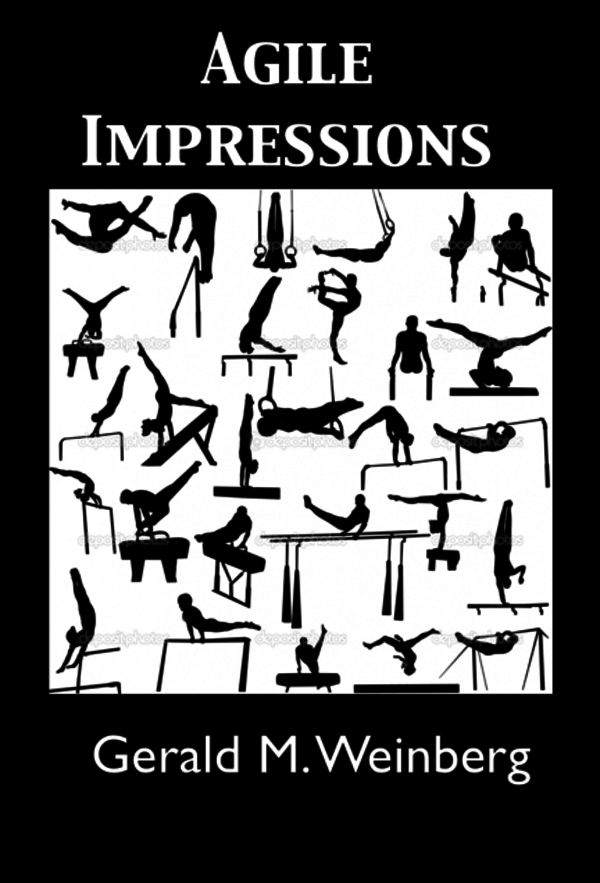TL;DR
Once upon a time I asked Michael Bolton what should I read in order to improve my software testing. The answer was: Everything from Jerry Weinberg. This post is a collection of quotes from Gerald M. Weinberg book Agile Impressions that triggered my Agile A-HA moments.
It’s not an Agile process if the customer (or surrogate) isn’t participating.
How to make the customer be part of the Agile process is one of the hardest questions with Agile or any method.
The relativity of quality.
Quality is meeting requirements.
Quality is meeting some person’s requirements.
Every statement about quality is a statement about some persons(s).
Who is the person behind the statement about quality? (heuristic for identifying quality.)
More quality for one person may mean less quality for another.
Quality is value to some person. (we usually hear this definition from testers. But it is just the conclusion, all previous quality quotes are essential part of this definition.)
By value, I mean, “What are people willing to pay (do) to have their requirements met.”
… the definition of quality is always political and emotional …
Using Agile. you may or may not get quicker project completion, you may or may not save money.
But you will get better customer satisfaction, and you will stay on top of your projects and be able to predict how much they will cost and how long they will take.
You may or may not stay out of trouble, but if trouble comes, you’ll see it coming in time to do something about it.
Agile methods are not for everyone. Start with best qualified teams.
Face-to-face may be the best way to communicate, but only if it’s done well.
We are placating when the other person is not reacting in the way I expect.
Don’t say yes to client’s first offer, but never say no.
WIBINIs? What’s that? It’s an acronym for the phrase, “Wouldn’t it be nice IF?”
But face-to-face communication fails as a maintenance tool if the development team is no longer around.
Indeed, for many types of information, a diagram, a picture, a video, a written words, or a demonstration may prove superior to face-to-face communication.
The code only tells what it does, not why it does what it does.
Unfortunately, management in many organizations doesn’t seem aware that their important documentation is carried around inside people’s heads.
Quality of individuals as documents.
Capturing living documentation on a recording. Audio is fine, but video is better.
Technical excellence comes not from heroics, but from continuous growth as a technical leader.
Simplicity – the art of maximizing the amount of work not done – is essential.
The amount of work we do for which we cannot explain its purpose.
Efficiency – the art of minimizing bureaucracy.
The best is the enemy of the good.
How to prevent change: kill the motivation, foster chaos – encourage high competition, suppress the flow of ideas.



